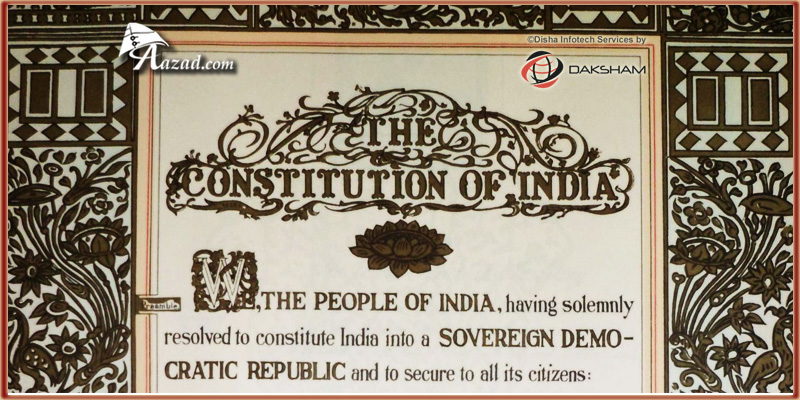- ●Breakthroughs in Prostate Cancer Treatment: What Every Patient Should Know
- ●Ovarian Cancer: The Silent Disease Women Cannot Ignore
- ●Children and Blood Cancer: Why Awareness is Crucial
- ●Women in Aviation India commences the celebration of 10th Girls in Aviation Day
- ●2025 Announcement, Appointment of New Board to Lead Hindustan National Glass & Industries Ltd
Constitution of India

India became independent of the British rule in August 1947, One of the most important tasks that the new nation had to take was to give itself a Constitution. It did so in 26 November 1949.
What is a Constitution?
A constitution is a set of rules by which the people of a country are governed. It says how the government should work and what its powers and duties are. And it guarantees or, promises the people important rights like justice and freedom. It also tells people what their rights are and what they can and cannot do. The constitution is higher than all other laws in the country. All laws passed by a country have to be in line with its constitution.
How was India's Constitution framed ?
The Indian Constitution was framed or, put together by the Constituent Assembly of India. The Assembly had over 300 members, From the many communities of India. They included lawyers, Constitutional experts and leading politicians like; Jawarharlal Nehru [The first Prime Minister of India] and Dr. Rajendra Prasad [The first President of India]. The Constituent Assembly met 11 times, Over 165 days between 1946 and 1949.
In August 1947, the Drafting Committee was set up, under Dr. B.R.Ambedkar. This Committee's job was to write the Constitution. On 26 November 1949, the final Draft of the Constitution was adopted by the Constituent Assembly.
The Indian Constitution
The Constitution of India came into force on 26 January 1950. It is the longest written constitution in the world. It has so far been amended, or changed, 94 times.
The Preamble to the Constitution says that it is from the people of India that the constitution gets it authority. It also states that the aim of the Constitution is to ensure justice, Freedom and equality for the citizens of India and the unity of nation.
The Fundamental Rights, which are a part of the Constitution, guarantee "civil liberties" to the people of India; that is, citizen have the right to freedom of speech and expression, to equality before the law and against discrimination based on religion, race, caste, or gender. They have the right to practise their own religion. All communities have the right to preserve and use their own language and script. Most importantly, All citizens have the right to move a court of a law in case any of the fundamental rights have been denied to them.
The PREAMBLE
"WE, THE PEOPLE OF INDIA, having solemnly resolved to constituent India into a SOVEREIGN SOCIALIST SECULAR DEMOCRATIC REPUBLIC and to secure to all its citizens: JUSTICE, social, economic and political; LIBERTY of thought, expression, belief, Faith and worship; EQUALITY of status and of opportunity; and to promote among them all FRATERNITY assuring the dignity of the individual and the unity and integrity of the NATION;
IN OUR CONSTITUENT ASSEMBLY this twenty-sixth day of November, 1949, do HEREBY ADOPT, ENACT AND GIVE TO OURSELVES THIS CONSTITUTION."
DR, Ambedkar: THE ARCHITECT OF THE INDIAN CONSTITUTION
Dr. Ambedkar was a brilliant lawyer who played a big role in putting together the the Constitution. He supported the idea of a uniform civil code, which meant that the laws would be the same for all Indians. He fought all his life for equal rights for everyone.




